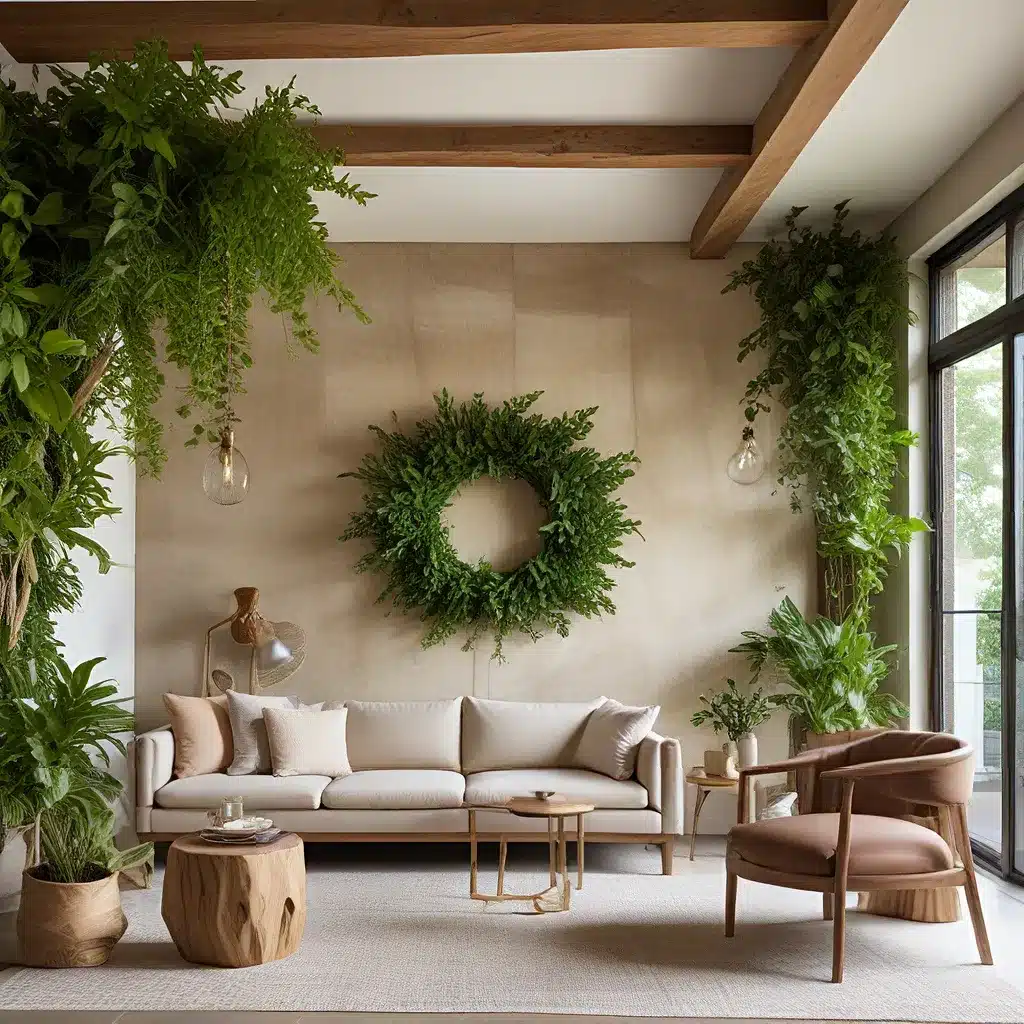
In a world where our homes have become sanctuaries, the desire to surround ourselves with the calming beauty of nature has never been stronger. As we seek to create interior spaces that soothe the senses and rejuvenate the spirit, the principles of sustainable design have taken center stage. By embracing nature-inspired elements and embracing the inherent resilience of native plants, we can craft living spaces that not only reflect our personal style but also contribute to the well-being of our local ecosystems.
Reconnecting with the Great Outdoors
The pandemic has undoubtedly transformed the way we view and inhabit our homes. No longer are they simply functional backdrops; they have become oases of tranquility, places where we can escape the stresses of the outside world and immerse ourselves in the restorative power of nature. This shift in perspective has led to a growing demand for interior design that seamlessly integrates the outdoors, blurring the lines between our living spaces and the natural world.
One of the most effective ways to achieve this harmonious balance is through the strategic use of native plants. These resilient species, adapted to thrive in their local environments, offer a wealth of aesthetic and functional benefits that can elevate any interior design scheme. From the lush foliage of native ferns to the vibrant blooms of pollinator-friendly wildflowers, incorporating these elements into your home can create a calming and rejuvenating atmosphere.
Sustainable Design Principles in Action
Embracing sustainable design principles is not just about creating visually stunning spaces; it’s about thoughtfully considering the long-term impact of our choices. By selecting materials and furnishings that are eco-friendly and ethically sourced, we can reduce our carbon footprint and contribute to a more sustainable future.
One such material that has gained considerable attention is reclaimed wood. This unique and versatile resource, salvaged from old barns, abandoned structures, or even fallen trees, adds a warm, rustic charm to any interior. Not only does it reduce waste and promote circular economy, but the natural variations and imperfections in the wood create a one-of-a-kind aesthetic that can’t be replicated with mass-produced materials.
Another sustainable design trend that has gained momentum is the use of natural fibers in textiles and upholstery. Materials like linen, hemp, and organic cotton not only offer a soft, luxurious feel but also require fewer resources and less energy to produce than their synthetic counterparts. These natural fibers also have the added benefit of being biodegradable, minimizing their environmental impact when the products reach the end of their lifecycle.
Nurturing a Harmonious Space
When it comes to space planning and layout, sustainable design principles can also come into play. By thoughtfully arranging furnishings and integrating multi-functional pieces, homeowners can create a harmonious flow that maximizes the use of available space while minimizing the environmental footprint.
One innovative approach is the use of modular furniture systems. These versatile solutions allow for easy rearrangement and adaptation to changing needs, reducing the need for frequent replacements and contributing to a more sustainable lifestyle. Additionally, the incorporation of dual-purpose pieces, such as ottomans with hidden storage or coffee tables with built-in charging stations, can streamline the functionality of a room without compromising its aesthetic appeal.
Bringing Nature’s Bounty Indoors
Beyond the thoughtful selection of materials and furnishings, sustainable interior design can also be enhanced through the integration of living elements, such as potted plants and living walls. These living, breathing features not only add a touch of natural beauty but also contribute to the overall air quality and well-being of the occupants.
The benefits of incorporating indoor plants into a home’s design are well-documented. They can help to purify the air, reducing the presence of harmful toxins and improving overall respiratory health. Furthermore, studies have shown that the presence of plants in a living or work space can have a calming effect, reducing stress levels and promoting a sense of tranquility.
For those with limited floor space, living walls offer a creative solution. These vertically-oriented displays of lush, native foliage can transform bare walls into captivating focal points, enhancing the visual interest of a room while also contributing to improved air quality and humidity levels.
Elevating Luxury with Sustainable Touches
Sustainable design doesn’t have to compromise on luxury or elegance. In fact, by thoughtfully incorporating nature-inspired elements, homeowners can elevate the overall aesthetic of their living spaces while upholding their commitment to environmental responsibility.
One such example is the use of natural stone, such as marble or granite, in kitchen and bathroom surfaces. These durable and long-lasting materials not only exude a sense of sophisticated refinement but also require minimal maintenance, reducing the need for frequent replacements or costly repairs.
Another luxury touch that aligns with sustainable design principles is the incorporation of handcrafted furnishings and artisanal accessories. These unique pieces, often created by local artisans or small-scale producers, not only add a personalized touch to a space but also support local economies and traditional craftsmanship.
Cultivating a Harmonious Lifestyle
Embracing sustainable design is not just about the physical transformation of our living spaces; it’s about cultivating a holistic, nature-inspired lifestyle. By integrating native plants, reclaimed materials, and multi-functional furnishings into our homes, we can create a sense of balance and harmony that extends beyond the walls of our dwellings.
This approach to interior design also encourages us to reconnect with the natural world, fostering a deeper appreciation for the beauty and resilience of our local ecosystems. As we surround ourselves with the calming presence of native foliage and the soothing sounds of wildlife, we can find a sense of tranquility and rejuvenation that nourishes both our physical and mental well-being.
Ultimately, sustainable interior design is not just a trend but a philosophy that empowers us to create living spaces that are not only visually stunning but also environmentally responsible and spiritually uplifting. By embracing this holistic approach, we can cultivate a lifestyle that celebrates the beauty of nature while actively contributing to a more sustainable future.

